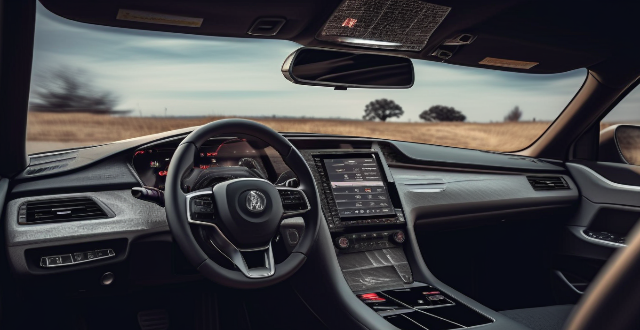Automakers are incorporating technology into vehicle interiors to enhance the driving experience, including digital dashboards, smartphone integration, advanced driver assistance systems, connected car features, and personalization options.

Automakers Incorporating Technology into Vehicle Interiors
Automakers are constantly incorporating technology into their vehicle interiors to enhance the driving experience and provide a more comfortable, convenient, and safe environment for passengers. Here's how they do it:
1. Digital Dashboards and Touchscreen Displays
Digital dashboards and touchscreen displays have become increasingly popular in modern vehicles. These systems allow drivers to access information such as navigation, entertainment, and vehicle diagnostics with ease. They also provide a customizable interface that can be tailored to individual preferences.
Key Features:
* Interactive maps and real-time traffic updates
* Streaming music and video services
* Voice recognition and control
* Customizable display options
2. Smartphone Integration
Many automakers offer smartphone integration through systems like Apple CarPlay and Android Auto. These systems allow drivers to connect their smartphones to the vehicle's infotainment system, providing access to apps like Spotify, Pandora, and Google Maps without having to physically use the phone while driving.
Key Features:
* Hands-free calling and messaging
* Access to music, podcasts, and audiobooks
* Voice-controlled navigation and searches
* Compatibility with most smartphones
3. Advanced Driver Assistance Systems (ADAS)
ADAS technologies help make driving safer by providing features like automatic emergency braking, lane departure warning, blind spot monitoring, and adaptive cruise control. These systems use sensors and cameras to monitor the vehicle's surroundings and provide alerts or take corrective action when necessary.
Key Features:
* Collision avoidance and mitigation
* Lane keeping assistance
* Blind spot detection
* Adaptive headlights and high beam assist
4. Connected Car Features
Connected car features enable vehicles to communicate with each other and with infrastructure elements like traffic lights and road signs. This technology can help reduce congestion, improve safety, and enhance the overall driving experience. Some examples include:
Key Features:
* Real-time traffic information and route optimization
* Vehicle-to-vehicle (V2V) communication for increased safety
* Remote starting and climate control via smartphone app
* Over-the-air software updates for improved functionality and security
5. Personalization and Comfort Features
To create a more personalized and comfortable environment for passengers, automakers are incorporating features like adjustable seating, climate control systems, mood lighting, and premium audio systems. These amenities aim to enhance the overall comfort and enjoyment of the ride.
Key Features:
* Heated and ventilated seats
* Multi-zone climate control
* Customizable ambient lighting
* Premium sound systems from brands like Bose, Harman Kardon, and Bang & Olufsen
In conclusion, automakers are leveraging various technologies to transform vehicle interiors into smarter, safer, and more enjoyable spaces for drivers and passengers alike. As technology continues to advance at a rapid pace, we can expect even more innovative features in future vehicles.